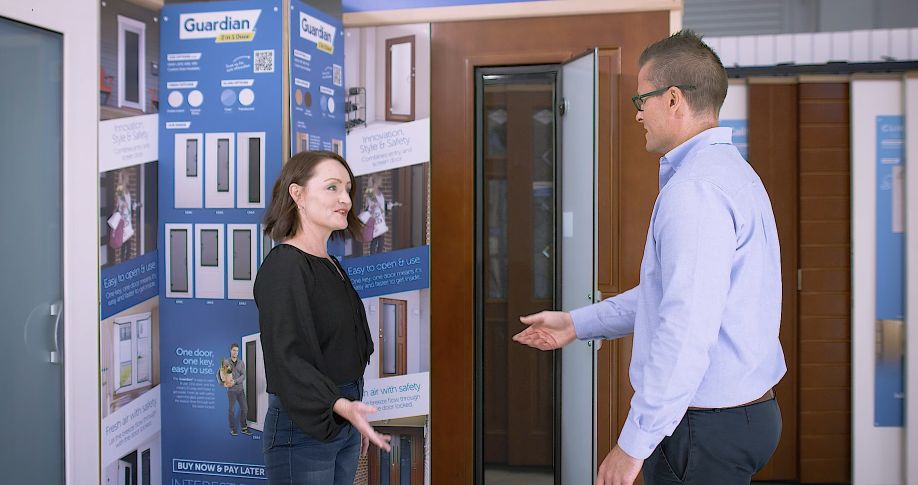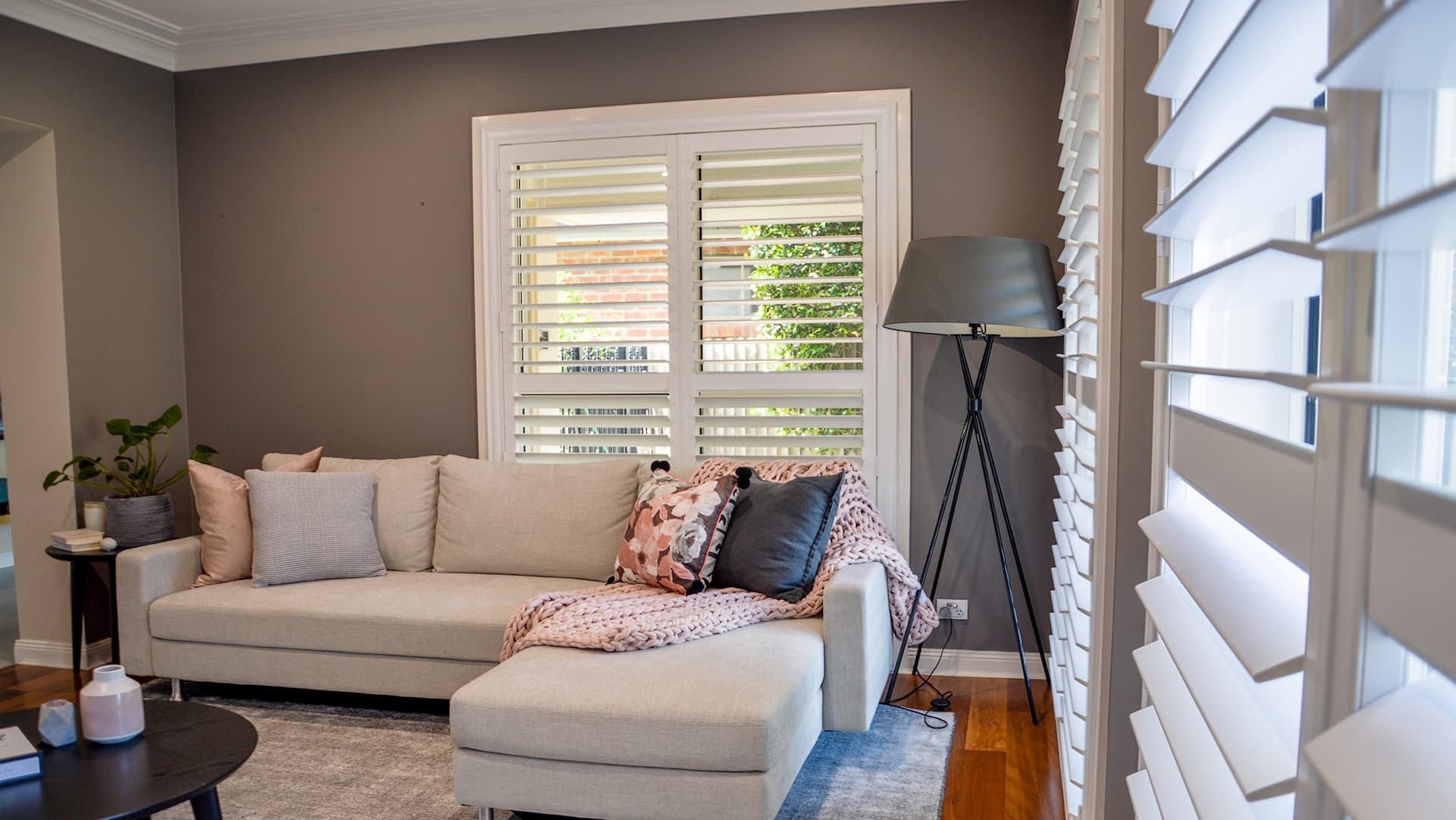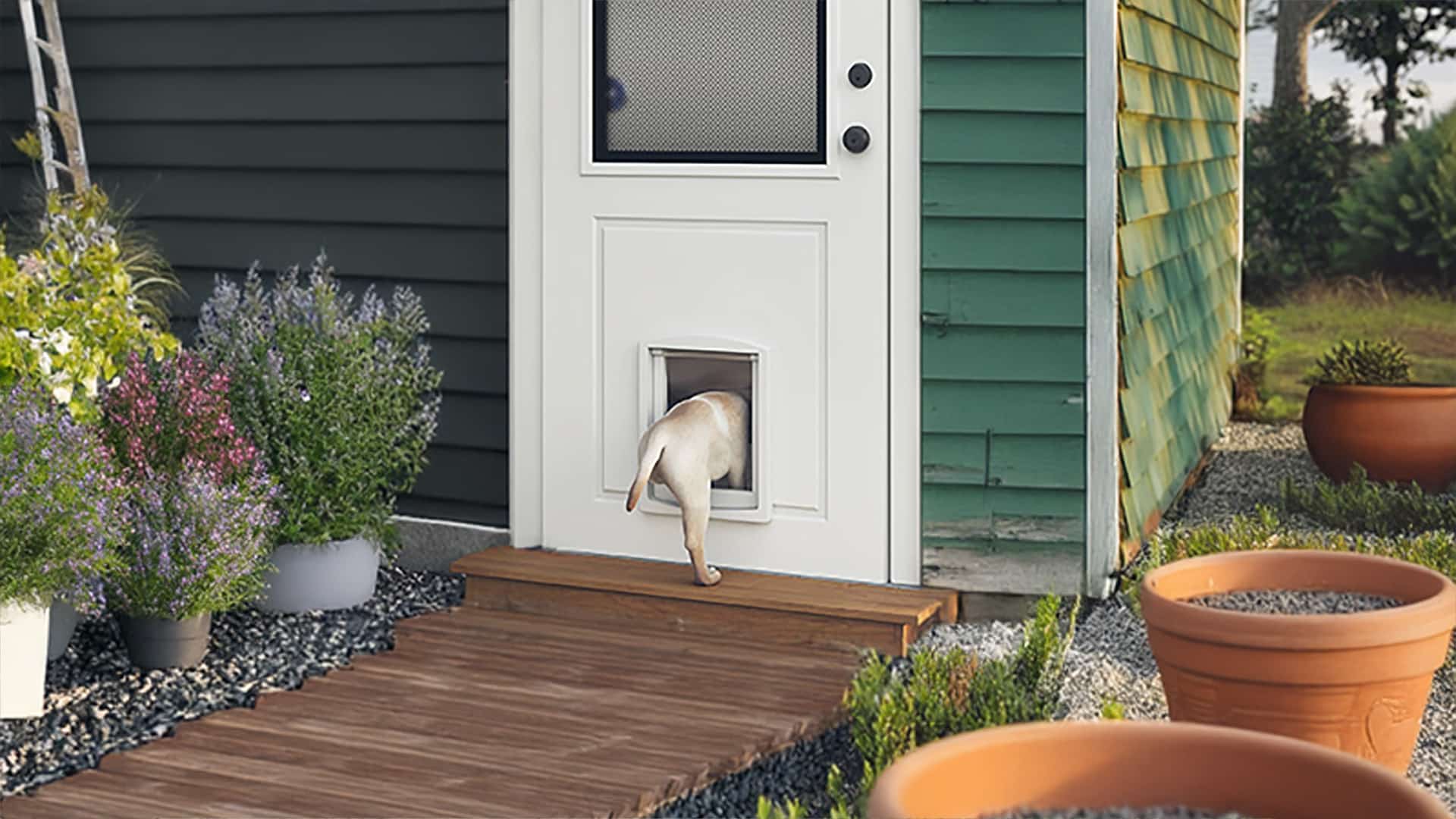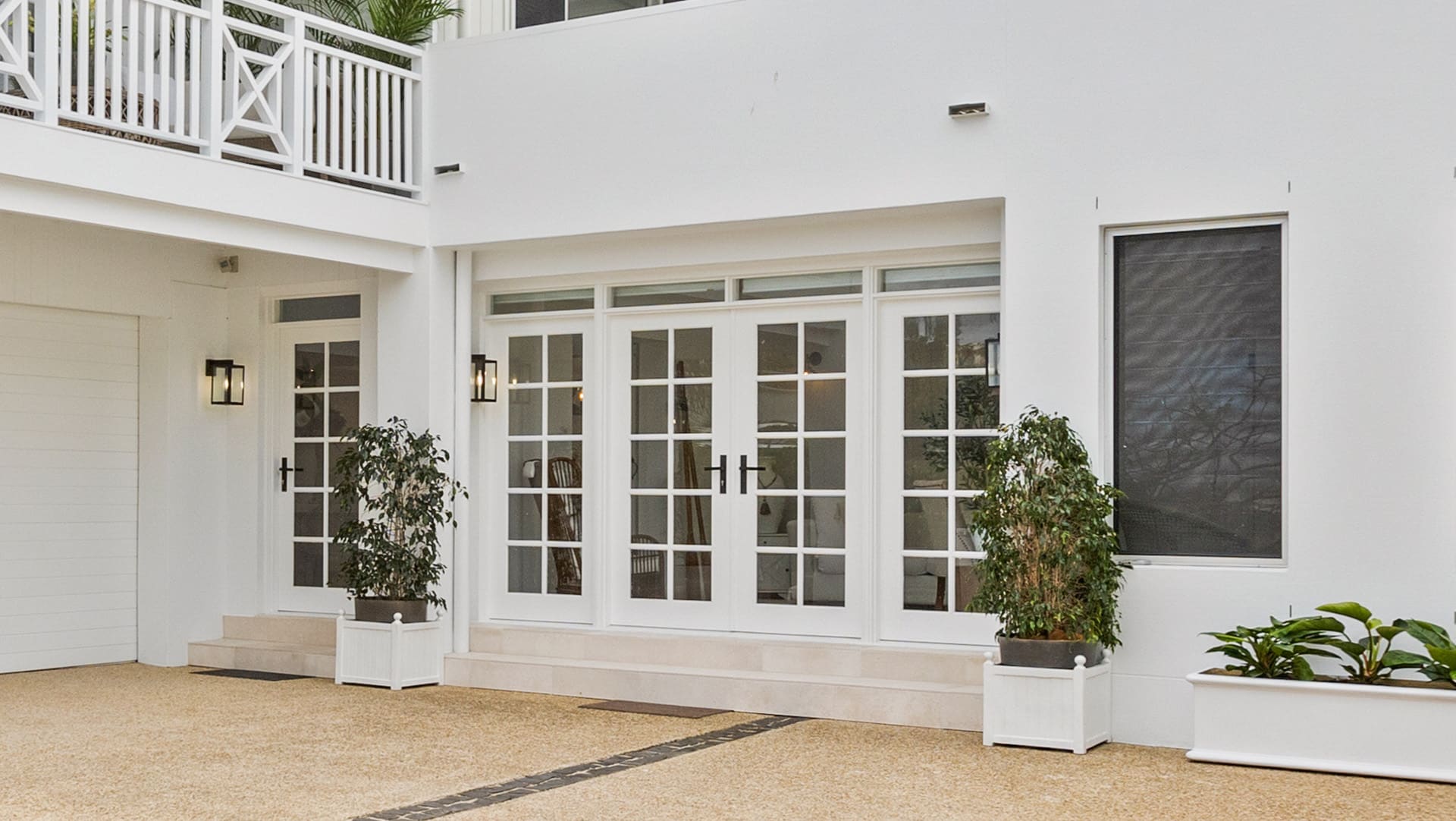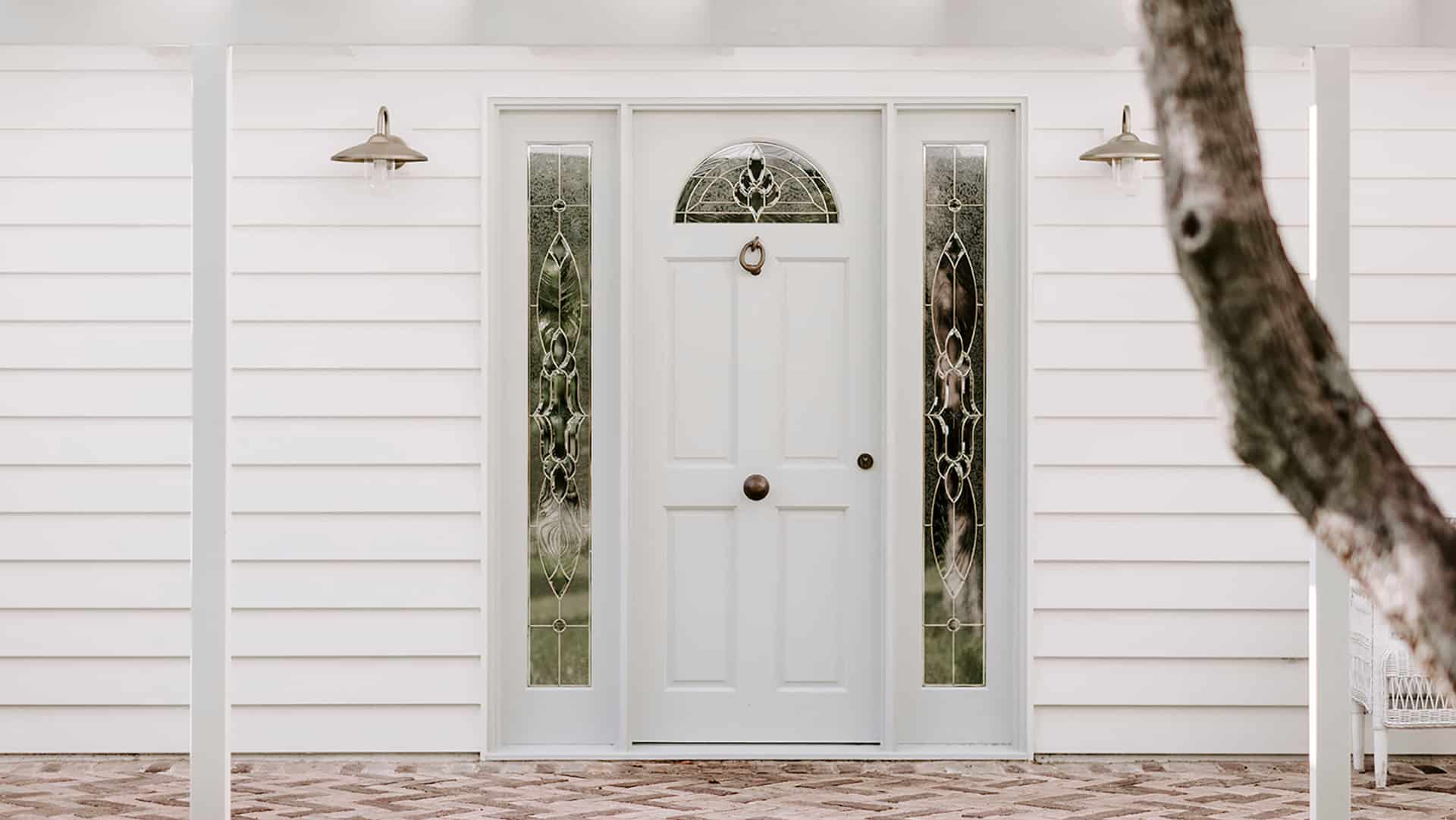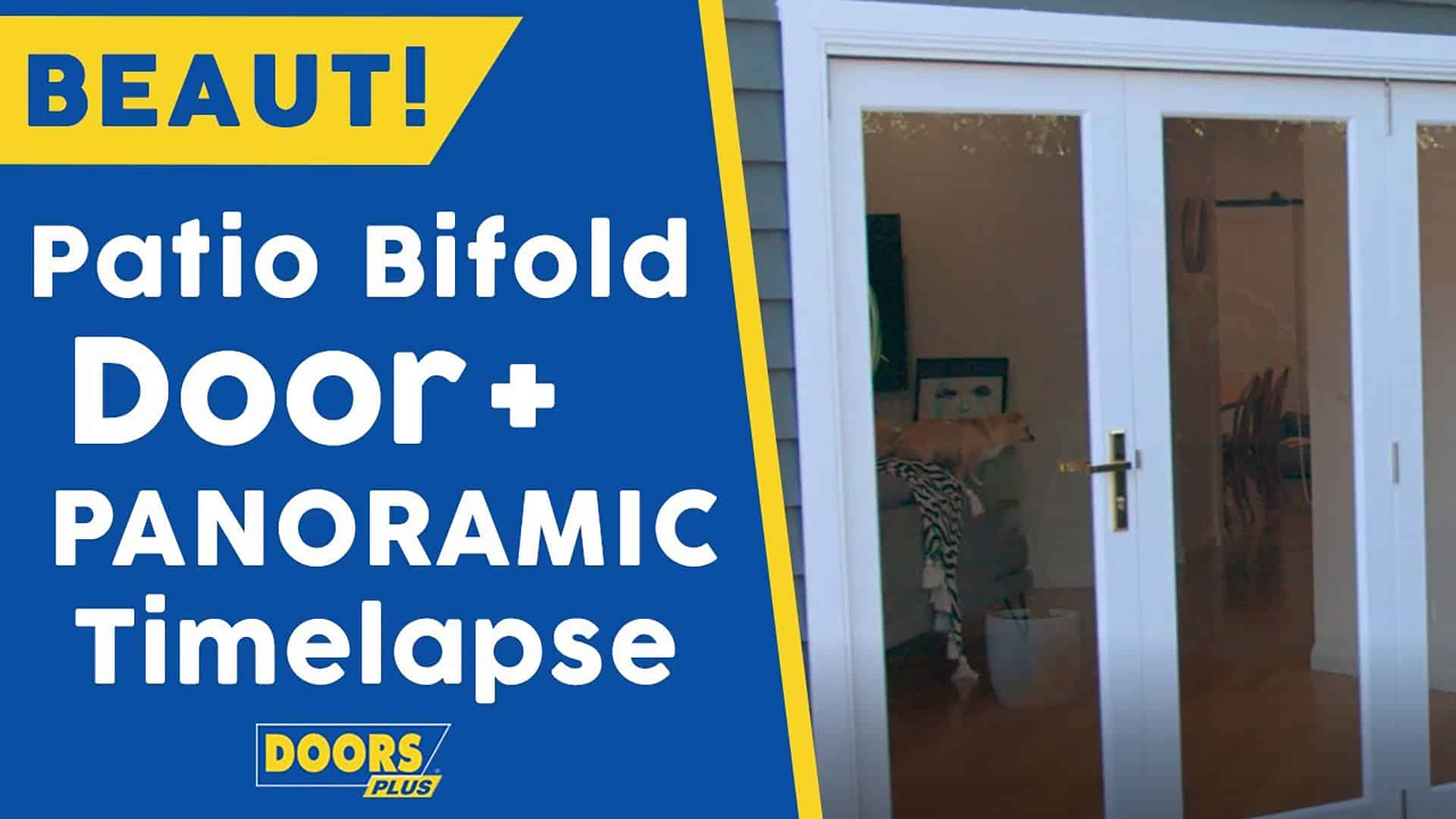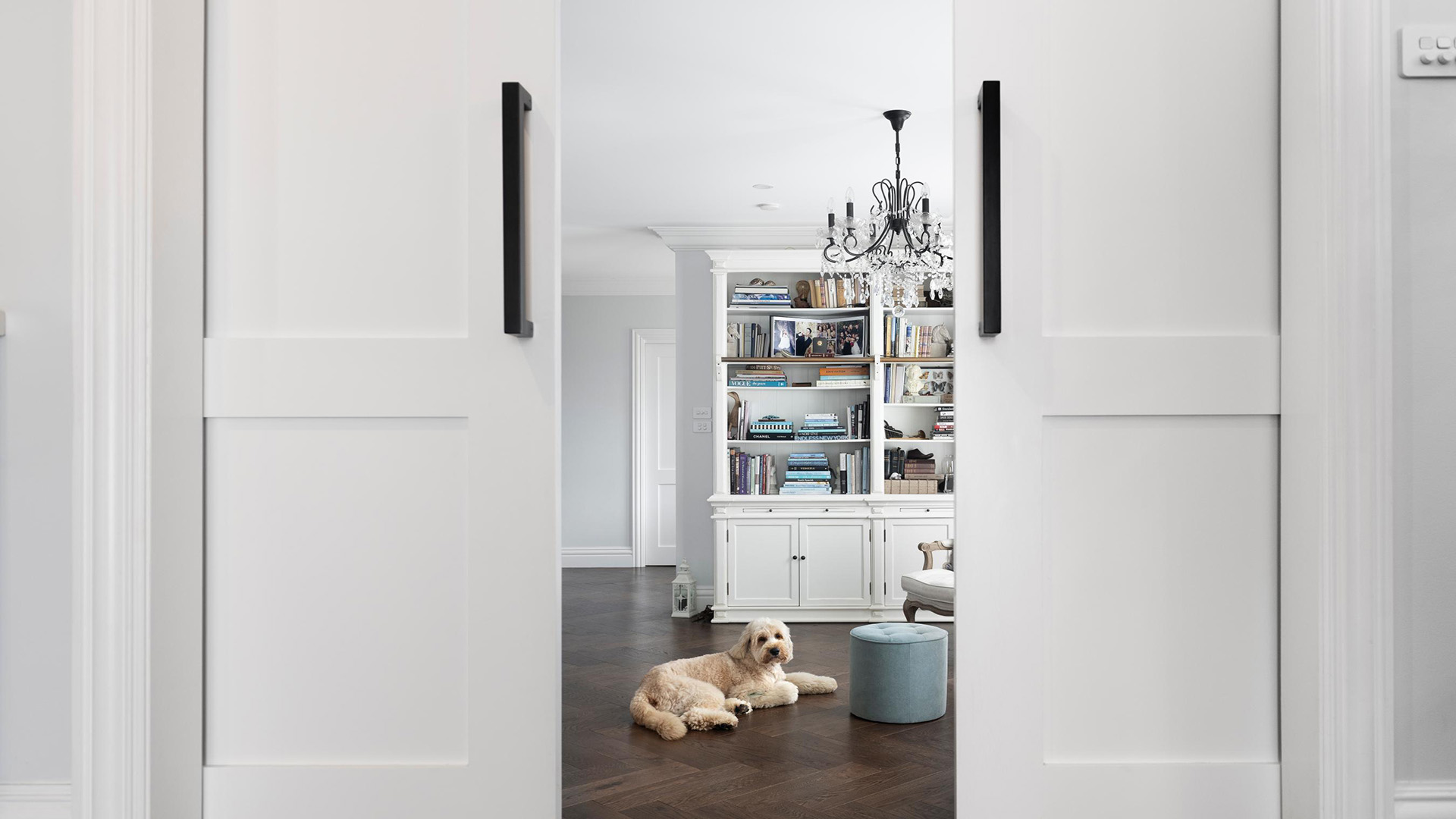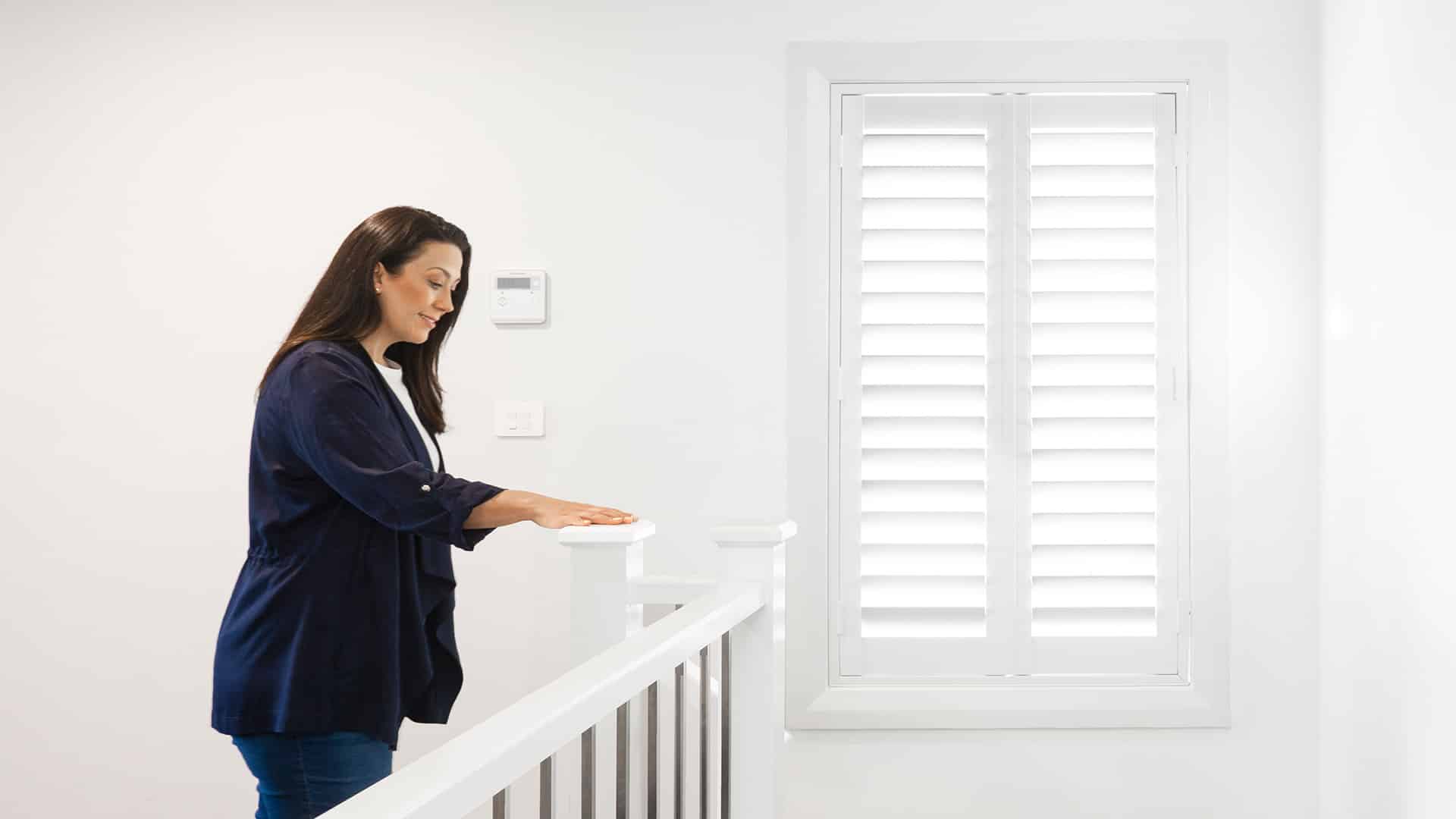7 Types Of External Doors To Choose For Your Home
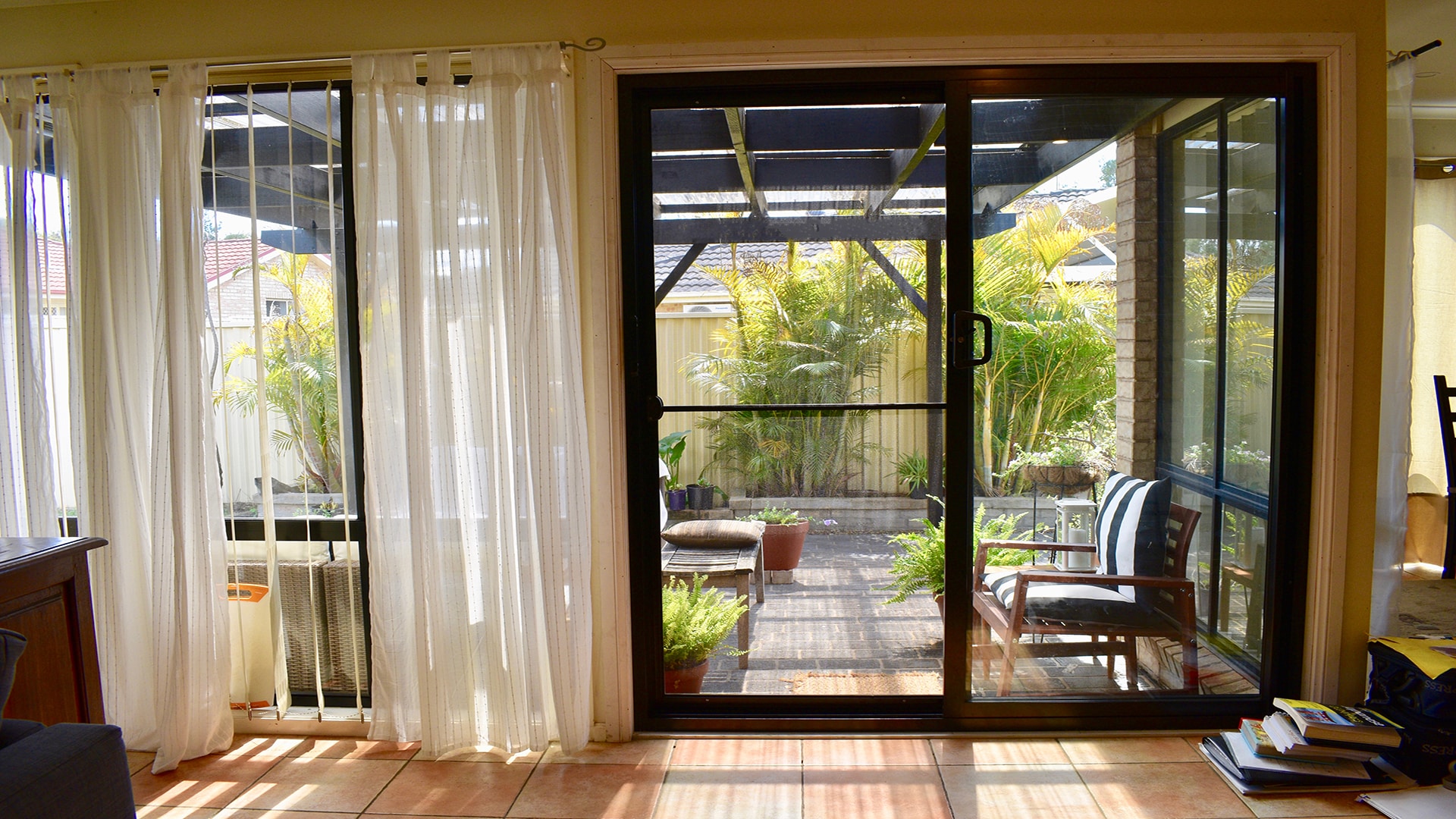
External doors come in all shapes and sizes.
Whether you’re choosing a new front door, creating an al fresco decking or patio area, or looking for secure and practical side doors, you will need to think about visual aesthetic, cost and functionality.
The look and performance of your doors comes down to the materials, the construction, the configuration and the finish, so some types of external doors are better suited to certain areas than others.
External doors have to serve several crucial functions, including keeping your home secure and weather resistant as much as possible, so when you’re considering the different types of external doors it’s important to know how they stack up against each other.
Types of Exterior Doors
For front or back doors, patio doors, laundry or side entrances, the types of external doors on offer include a huge variety of materials, styles and configurations.
You might choose single or double hinged doors, French doors with glass, or even bi-fold doors that open up onto a garden or decking.
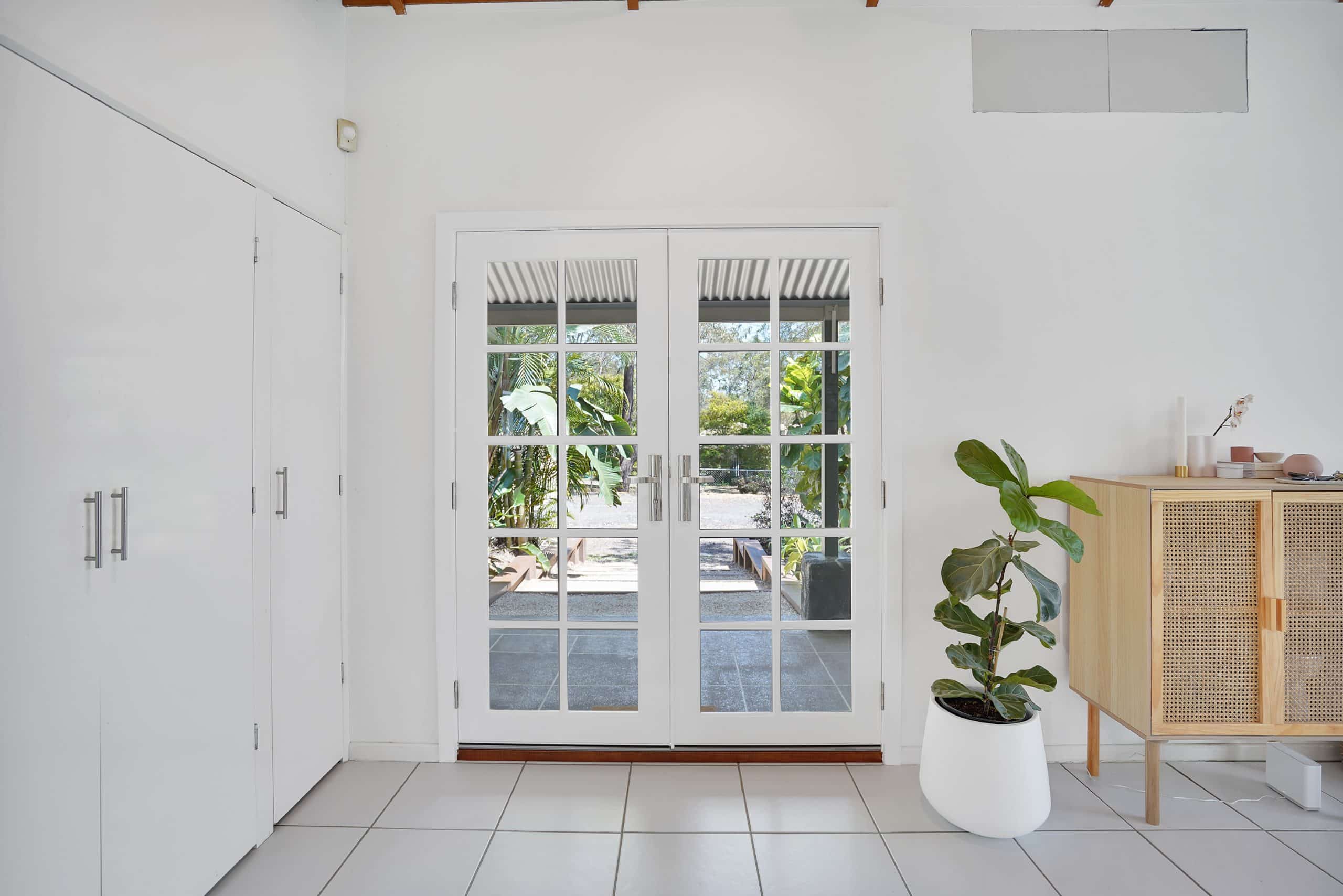
There is a huge variety of materials to choose from, including wood, fibreglass for outstanding weather-resistance, aluminium for durability and contemporary style, and composite doors for versatility.
7 External Door Types:
- Wooden External Doors
- Composite External Doors
- Fibreglass External Doors
- Aluminium External Doors
- External Bifold Doors
- External Patio Doors
- Victorian External Doors
1. Wooden External Doors
Wooden doors are popular as external doors all around Australian homes as they offer a huge choice of designs to suit a traditional or contemporary style.
Wooden doors can be panelled or flat, with the option of adding glass to let in more natural light. Wood can be painted to suit your tastes or stained to bring out the texture of the natural grain.
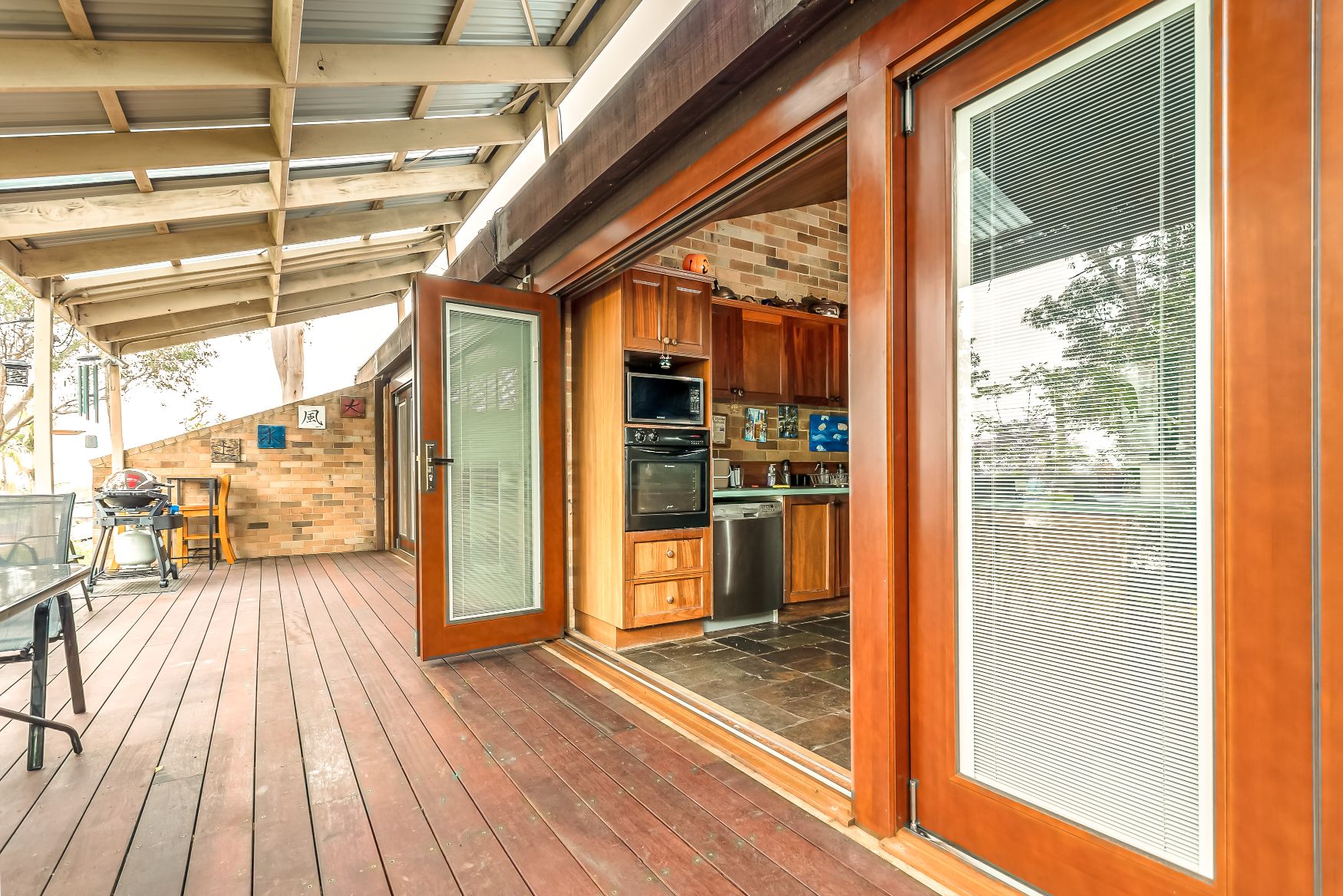
What are the benefits of wooden doors?
Pros:
- Solid construction
- Multiple styles and designs
- Option to include glass
- Suited to both traditional and contemporary homes
- Natural wood adds character and texture
- Can be painted or stained
Cons:
- Require ongoing maintenance
- Not ideal for high moisture areas
Where is best for a wooden door?
Wooden doors make some of the best front doors because the natural material brings a sense of welcoming warmth and stately elegance.
However, they also make stunning sliding, folding or stacking doors for an al fresco dining area at the back or side of the house.
Best areas for wooden doors:
- Front doors
- Side/back doors
- Security doors
- Patio doors
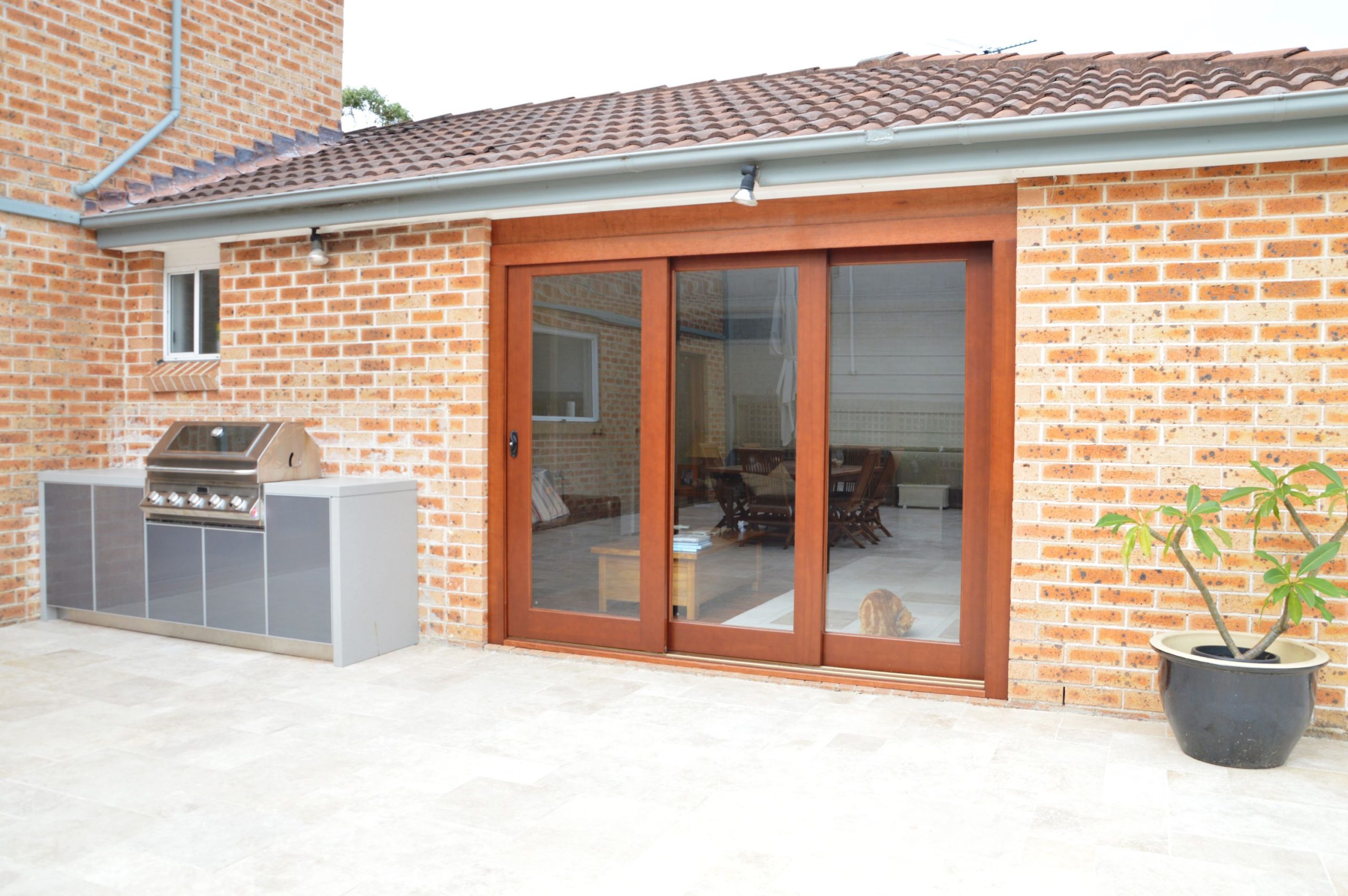
How much does it cost?
Solid wood doors are generally more expensive than those made from composite materials, but with quality timber you get the added benefit of superior insulation, natural grain and texture, and doors that are built to last.
The final price will often depend on the door you choose, including the design, if it contains glass or not and the size.
2. Composite External Doors
Composite doors bring together the best elements of various different materials, such as wood, MDF and insulating foam amongst other materials.
They are extremely versatile in style, with optional moulding to resemble wooden doors.
Composite external doors are also tough, resilient and require very little maintenance.
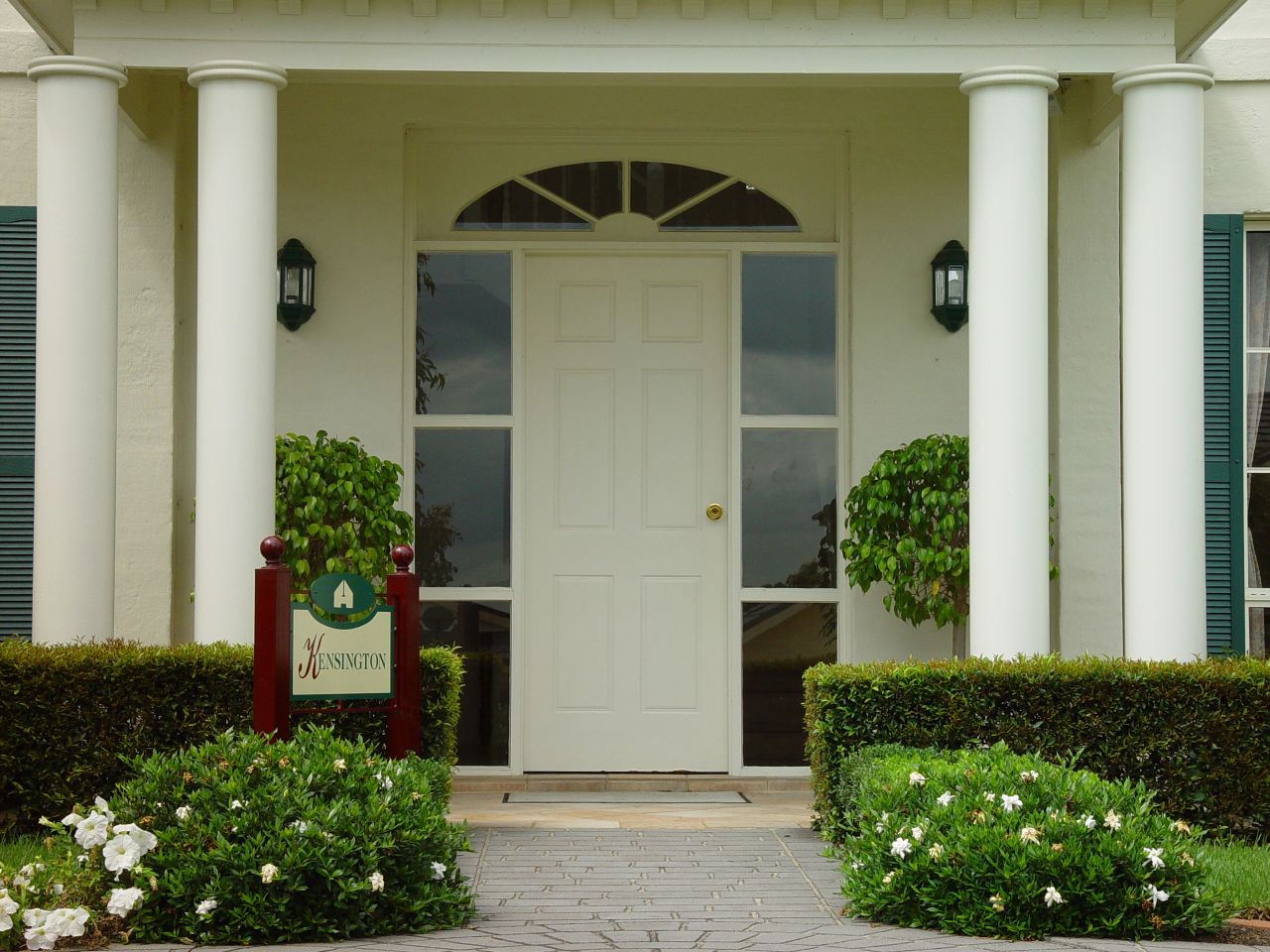
What are the benefits of composite doors?
Pros:
- Wide range of styles and designs
- Option to include glass
- Suited to both traditional and contemporary homes
- Can be painted to suit your personal tastes
- Good insulation
- Resilient, secure and durable
- Require little maintenance
Cons:
- Can be costly
- Less natural character than solid timber
Where is best for a composite door?
Composite doors are a practical and economical choice for any external entrance, from a stylish front door to a resilient side security door.
They also work well as external side or laundry doors, with the option to add glass to increase light flow into darker rooms or hallways.
Best areas for composite doors:
- Front doors
- Side/back doors
- Laundry doors
- Security doors
- Garage doors
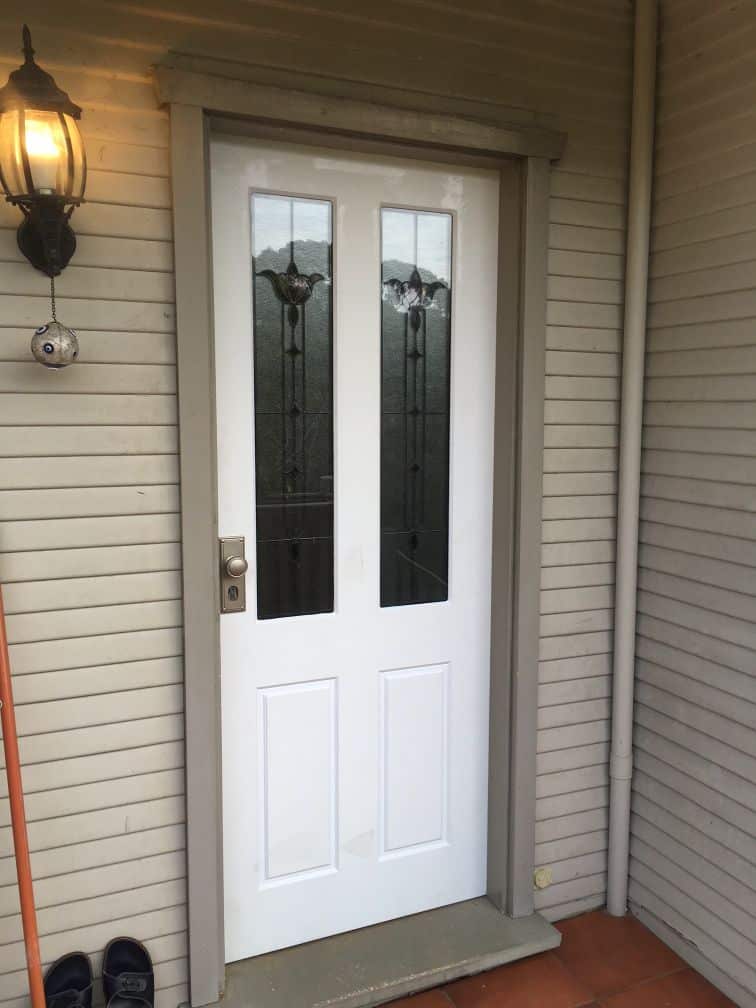
How much does it cost?
Composite doors can be cheaper and at the same time more expensive than solid timber as they combine the qualities and benefits of multiple materials, but they are also very durable and long-lasting.
The exact cost will depend on the style, size and configuration of your doors.
3. Fibreglass External Doors
Advanced fibreglass technology delivers outstanding weather-resistance, even when it comes to the harsh Australian climate.
Unlike wood, fibreglass doors can expand and contract without warping and splitting, and the skin is durable and resilient in the face of the elements.
There are multiple styles to choose from, including both flat and panelled doors, and even the option for a woodgrain finish.
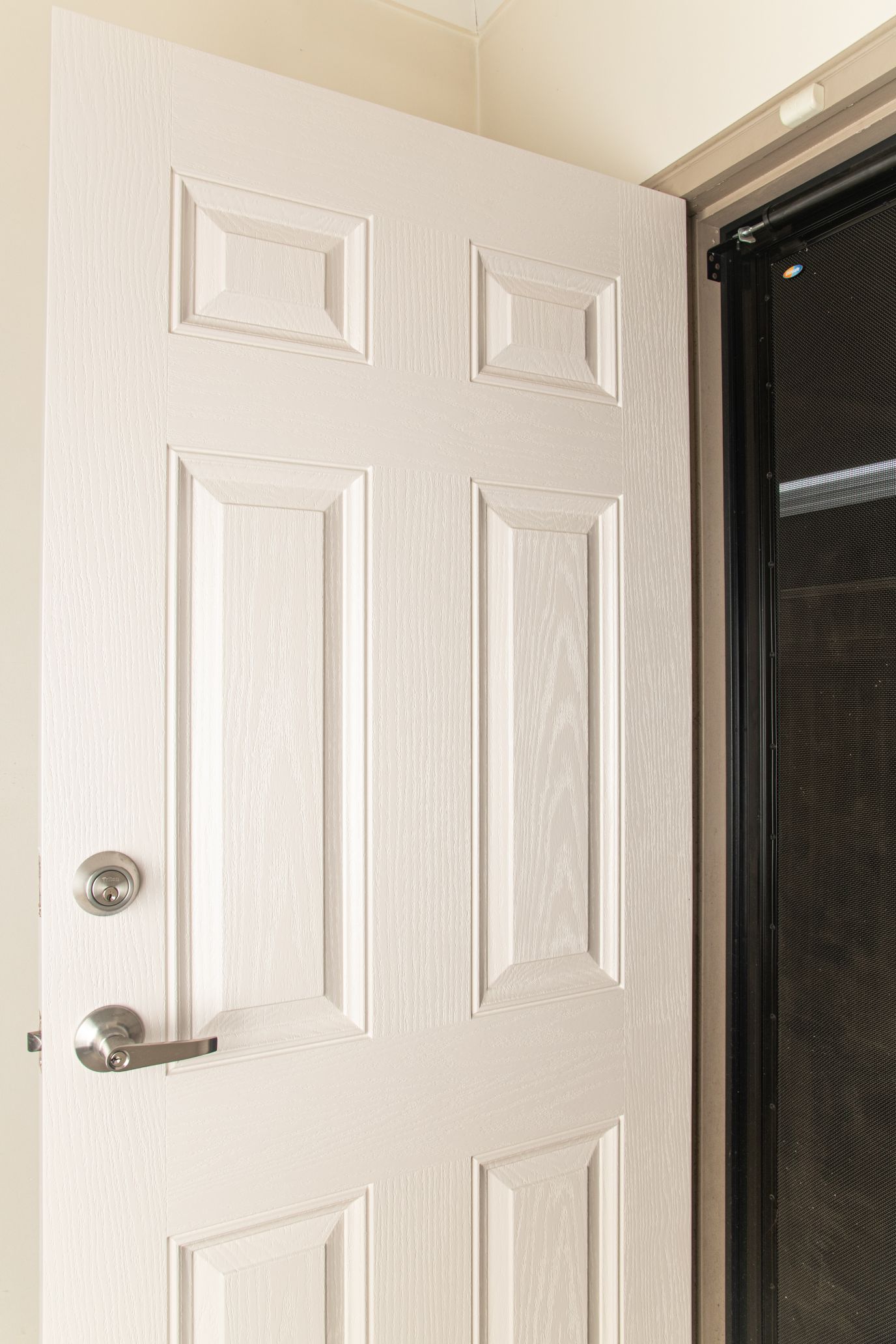
What are the benefits of fibreglass doors?
Pros:
- Excellent protection against the elements
- Guaranteed not to warp, split or rot
- Good insulation
- More economical than solid timber
- Smooth skin is easy to paint
- Versatile styles
- With or without glass
Cons:
- Less authentic character than natural timber
Where is best for a fibreglass door?
Fibreglass external doors are excellent for entrances that are particularly exposed to the elements, including front doors, side or garage entry doors.
Robust, resilient and secure, they make a solid choice for doors all around the exterior of the home.
Best areas for fibreglass doors:
- Front doors
- Side/back doors
- Laundry doors
- Security doors
- Garage doors
How much does it cost?
Lightweight fibreglass is generally a more economical option than solid timber or composite doors, but the exact cost will depend on the size and specifications.
For example, whether you choose single or double doors, with or without glass.
5. Aluminium External Doors
Aluminium is a beautiful and robust material for stylish external doors that can stand up to the elements.
Sleek aluminium frames combine with laminated glass, for maximum light flow and an unbroken view.
Ideal for panoramic patio doors, whether folding, sliding or stacking, aluminium doors also come in single or double hinged configurations.
The frames can be finished in a choice of contemporary colours.
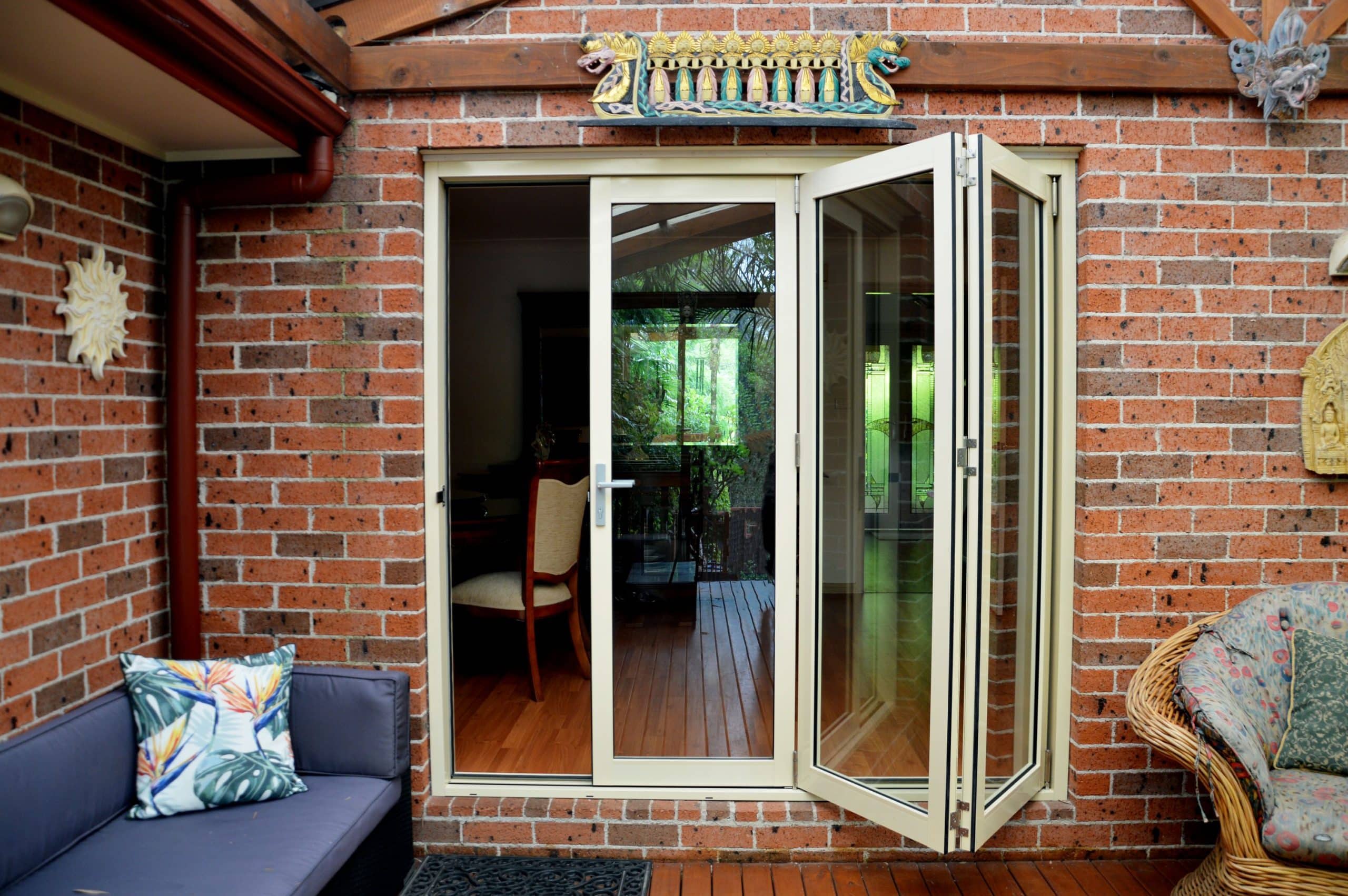
What are the benefits of aluminium doors?
Pros:
- Sleek and contemporary
- Robust and durable
- Very low maintenance
- Multiple configuration options
- Choice of colour finishes
Cons:
- Can be costly
Where is best for an aluminium door?
Aluminium frames make for stunning al fresco doors that give you ultimate flexibility, uplift your living or dining areas with plenty of natural light, and guarantee resilience and durability.
Commercial grade aluminium, with double weather seals, is also ideal for high moisture areas, such as laundries.
Hinged or sliding screen doors harness the strength and robust nature of aluminium to provide excellent security at any external entrance.
Best areas for aluminium doors:
- Front doors
- Side/back doors
- Patio doors
- Laundry doors
- Security screen doors
How much does it cost?
Aluminium is an expensive choice compared to other types of external doors, but this is because it both looks the part and offers superior qualities of resilience and durability.
The cost will depend on the size of your entrance, and the style and configuration of your doors, such as the number of folding, sliding or stacking panels.
5. External Bifold Doors
Bi-fold doors are sets of door panels that are hinged at the centre, so the panels fold away to one side when open.
The doors can slide along the track to the left or the right (or both), giving full access to the opening.
External bifold doors are available with aluminium or timber frames, in a choice of finishes, and clear glass panels for maximum light.
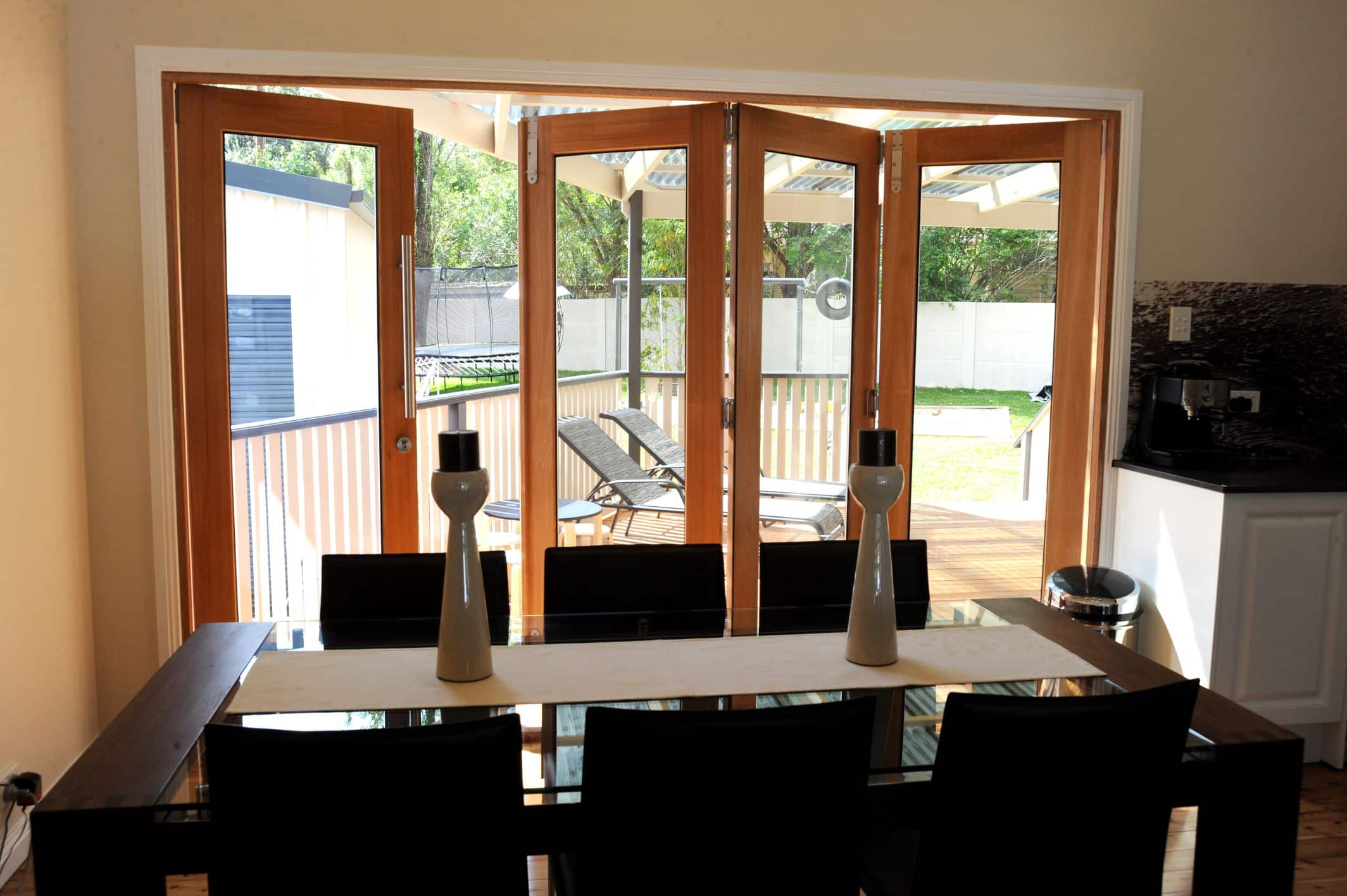
What are the benefits of external bifold doors?
Pros:
- Aluminium or timber
- Multiple finish options
- Can be custom made to fit your space
- Allow for flexible, al fresco living when open
- Large glass panes let in plenty of natural light
- Give full access to wide openings
Cons:
- More costly than standard hinged doors
- Can be bulky when folded to one side
- You may want to upgrade to double glazing
Where is best for a bifold door?
Bi-fold doors are particularly well suited to wider openings, where hinged doors wouldn’t be practical.
They make for excellent patio doors, leading out onto a decking or veranda, allowing you to open up your living area and let the outside in.
Best areas for bifold doors:
- Patio doors
- Side/back doors
- Laundry doors
- Garage doors
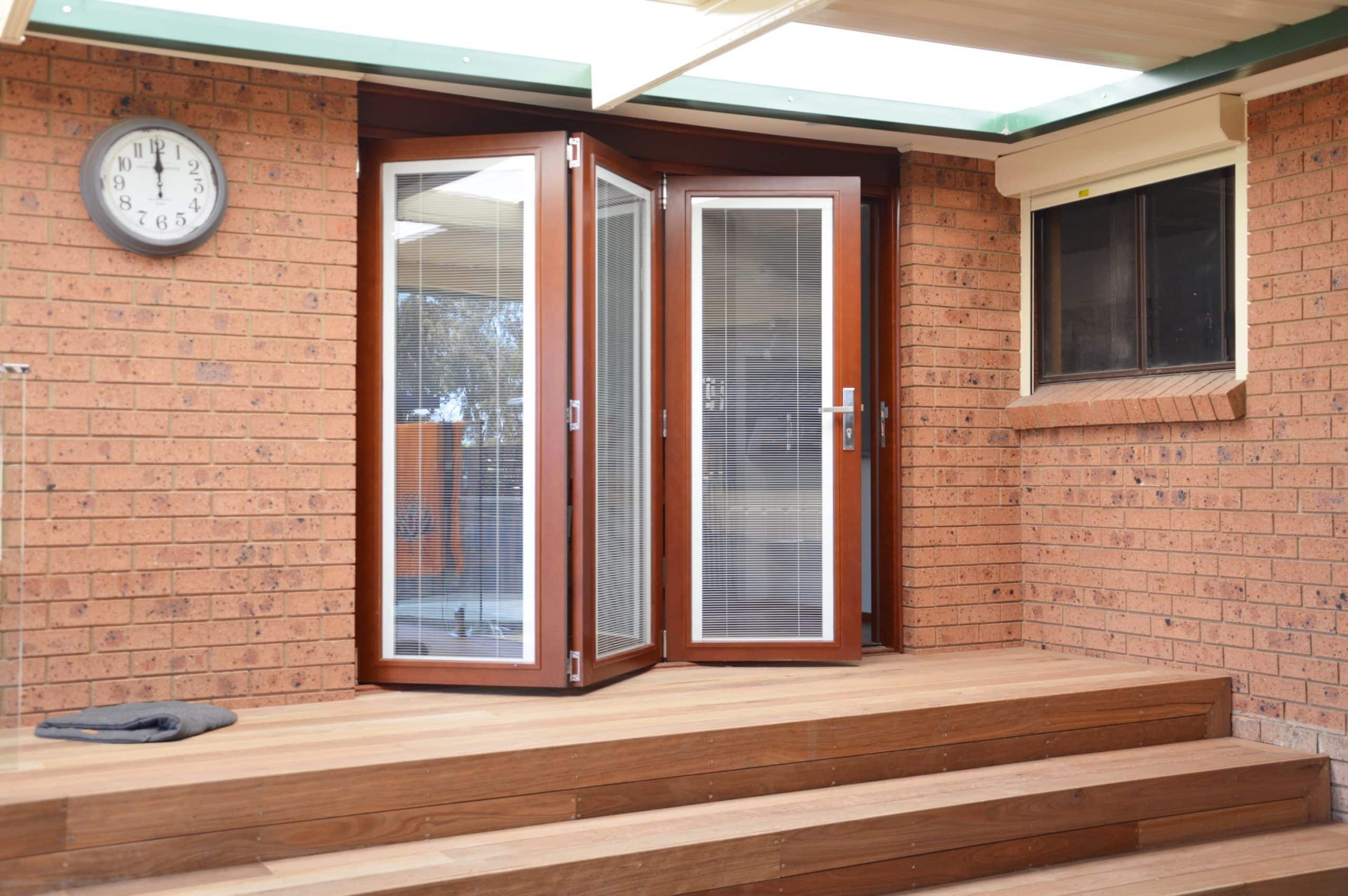
How much does it cost?
Bifold doors are usually made to measure, so the cost will depend on the material and the number of panels you need.
You can also choose to incorporate an integrated venetian blind in the timber option, a fly or security screen, all of which will add to the final cost.
It’s important to visit a showroom, see the options and get a measure and quote up front so that you know what to expect.
6. External Patio Doors
External patio doors can be hinged, folding, sliding or stacking doors that open up your living area onto a patio, decking, veranda or garden.
The quintessential patio doors are the French-style hinged double doors, with one or multiple panes of glass.
Timber French doors can be stained or painted to suit the look of your home.
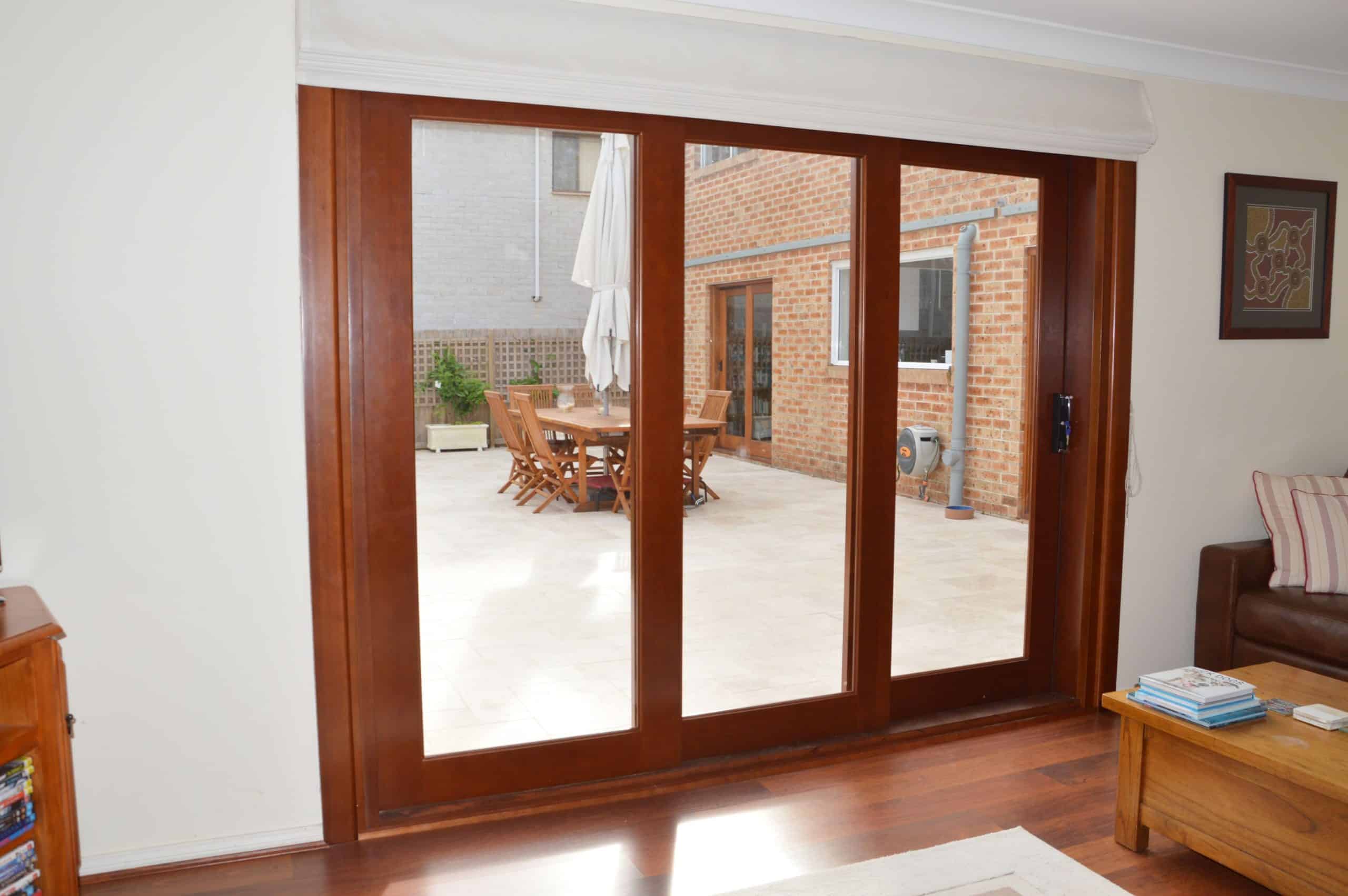
What are the benefits of patio doors?
Pros:
- Flexible al fresco living and dining
- Uplift the interior with natural light
- Multiple designs to choose from
- Clear or translucent glass
- Optional side panels
- Chic style
Cons:
- Require space for hinged doors to swing open
Where is best for a patio doors?
Patio or French doors have the power to transform your kitchen, dining or living area by opening out onto a decking or garden.
They flood your rooms with light and create a flow from inside to outside, with sliding, stacking and bifold options.
French doors are also becoming one of the popular front door types for Australian homes, with optional side panels to create a majestic and welcoming entrance.
Best areas for patio doors:
- Patio, decking or garden doors
- External dining room doors
- Onto Veranda or Balcony
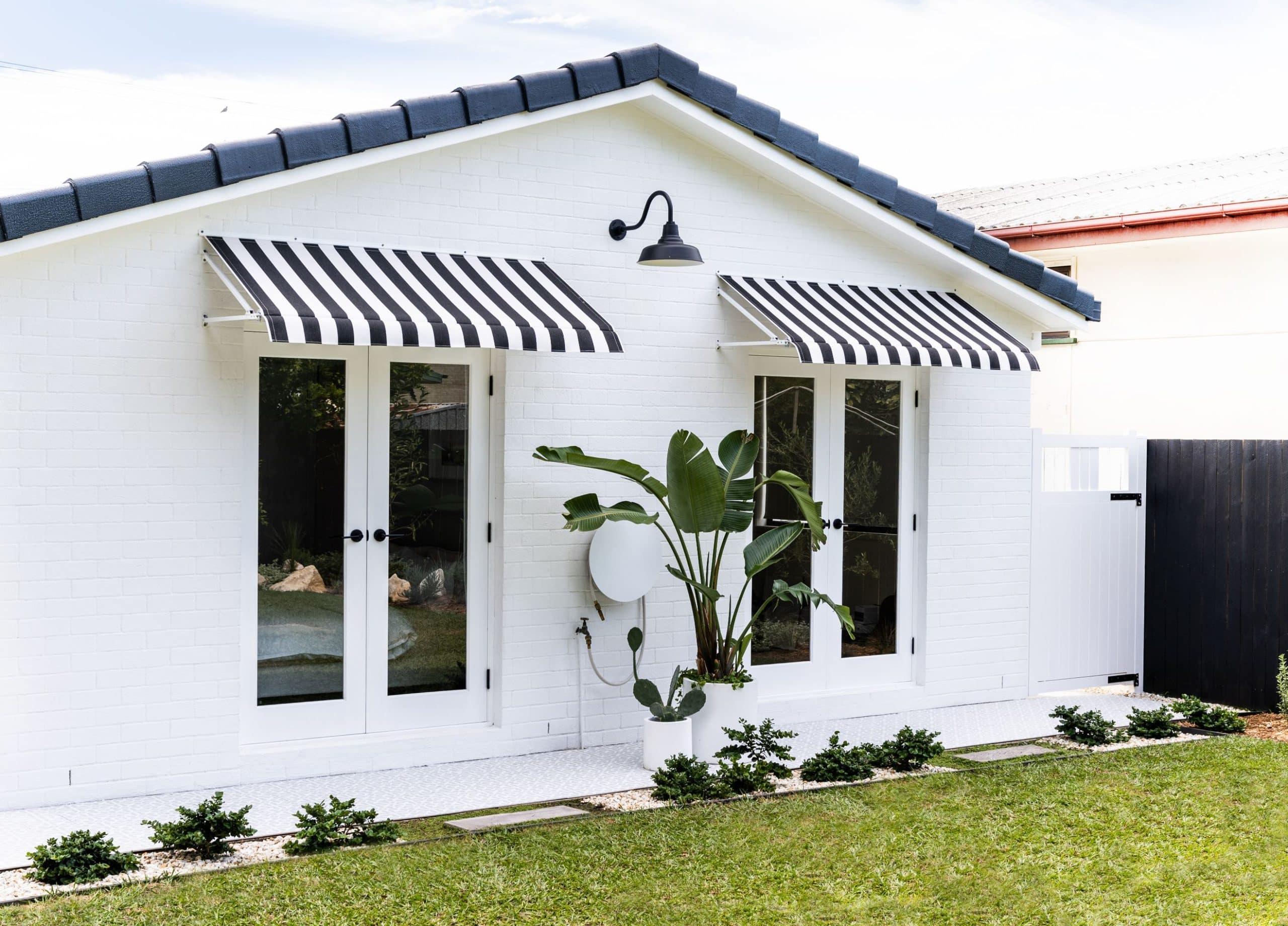
How much does it cost?
This will depend on the size and configuration of your doors, your choice of design, and whether you opt for matching side panels, if you choose hinged doors.
Considering screen upgrades too for hinged, sliding or stacking doors will also change your total investment.
7. Victorian External Doors
Victorian external doors are particularly well-suited to traditional or federation style homes.
They often incorporate decorative glass encased in lead, brass or zinc, in a fan or oval effect. Coloured glass adds visual interest, both inside and out, as the light filters through.
Timber doors can feature moulding and embellished touches, or a more minimalist design can give a modern twist to the Victorian style.
Victorian doors come in single or double configurations.
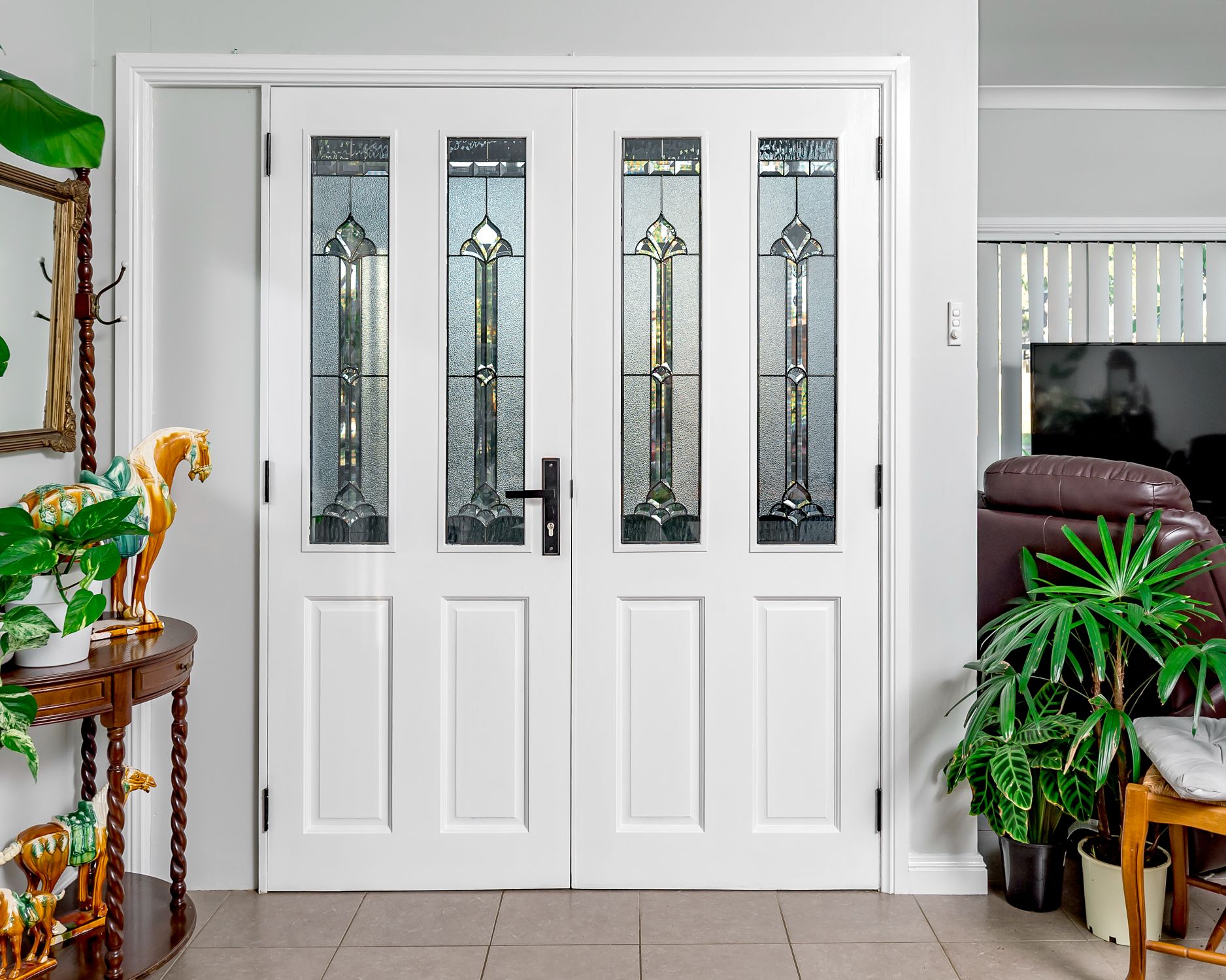
What are the benefits of Victorian doors?
Pros:
- A distinctive and stylistic choice
- Optional raised moulding
- Can be stained or painted
- Coloured glass adds interest as it filters light into the home
- Optional side panels
Cons:
- May not suit all home styles
Where is best for a Victorian door?
The Victorian style can make for elegant and stately front doors, especially when combined with matching side panels.
They can also work well as garden or patio doors, leading out from the kitchen or living area.
Best areas for Victorian doors:
- Front doors
- Garden doors
- External kitchen doors
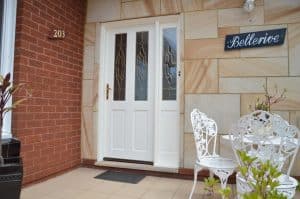
How much does it cost?
Victorian external doors vary in price, depending on the size, configuration and style you choose.
Triple glazed leadlite designs add to the price, but also give these doors their distinctive charm.
It’s best to get a comprehensive quote for your exact specifications.
External Door FAQs
Which door is best for outdoor?
The best exterior door will depend on the location of the entrance, what you want from your doors, and your budget.
For example, for a doorway that’s especially exposed to the elements, fibreglass or aluminium would be a good choice.
If you’re looking for doors that open out onto a garden or al fresco dining area, you will probably want bifold or French patio doors that fill a wide opening and let plenty of light in.
For a distinctive and elegant front door, you might choose the Victorian style with decorative glass.
When it comes to budget, timber and aluminium will be at the top end, whereas fibreglass and composite doors are a more economical option.
How much exterior doors cost?
This depends entirely on the material and style of door, and the size and specifications of your entrance.
By visiting a showroom you can find out more about the cost of external doors and external doors sizes, and arrange a measure and quote before you commit.
What type of exterior door is cheapest?
The cheapest types of external doors tend to be single, hinged composite, solid wood or fibreglass doors.
Double or bifold doors will be more costly, with composite and aluminium being the least economical materials.
However, these are also highly durable and require little ongoing maintenance.
Read more about the cost of external doors to understand some of the variables that affect how much you pay for your doors.
You should also factor in the cost of installing your doors, unless you plan to do this yourself.
Learn more about how to install external doors and be sure to enlist a professional if you don’t feel confident.
How do I choose an external door?
As you can see, there are plenty of different types of external doors to choose from, depending on the style of your home and the role your doors are going to play.
External doors affect the visual aesthetic of your property, but they also play a vital role in keeping your home and family protected from the elements and from unwanted intruders.
When choosing your new external doors, you should consider:
- Curb appeal
- Weather-resistance
- Security
- Function
- Budget
If you find doors that you love but want to enhance the sound and thermal insulation, for a comfortable and peaceful environment in the home, you can also find out how to insulate external doors.
The best way to compare the pros and cons of the different materials and styles of external doors is to visit a showroom and explore the products for yourself.
That way, you can get a feel for what suits your tastes and your home, as well as the various configuration and finish options on offer.
For expert advice and support to help you make the right decision, visit your local Doors Plus store and talk to one of our door specialists.
